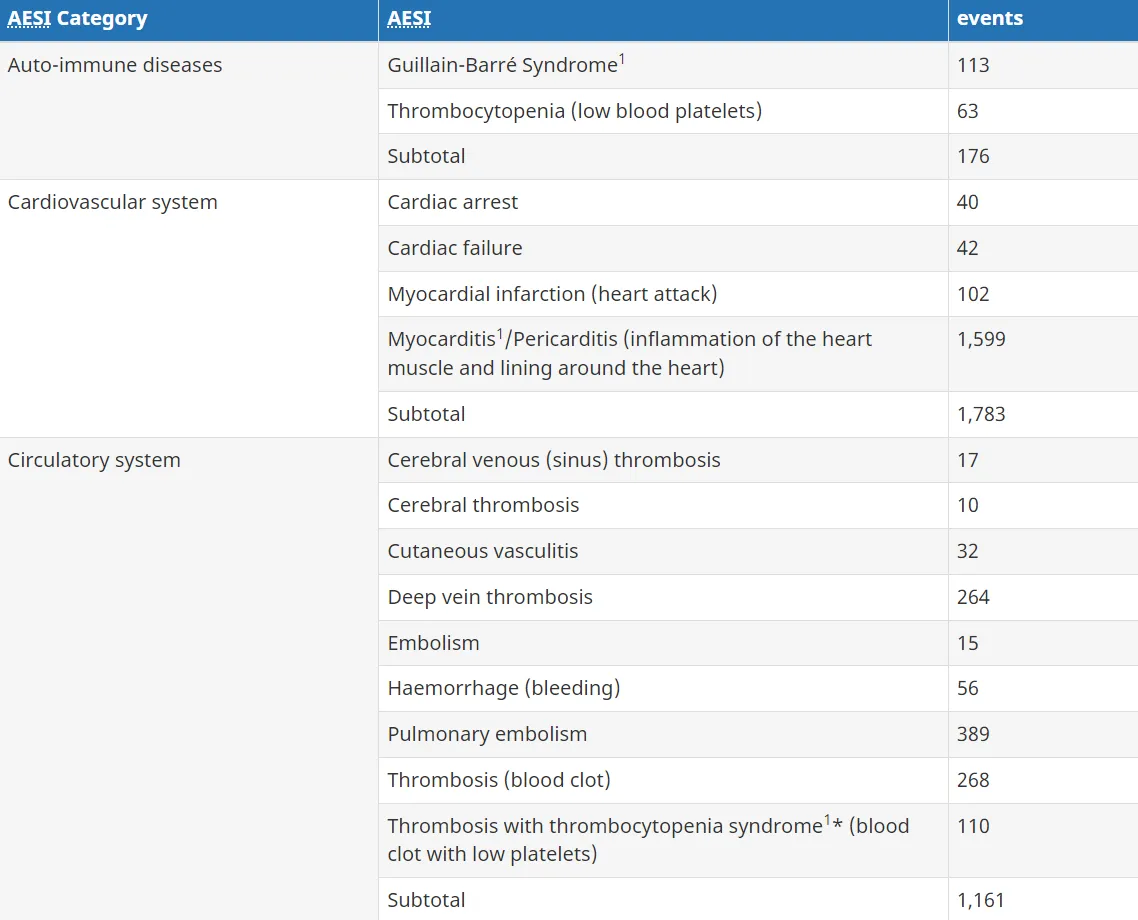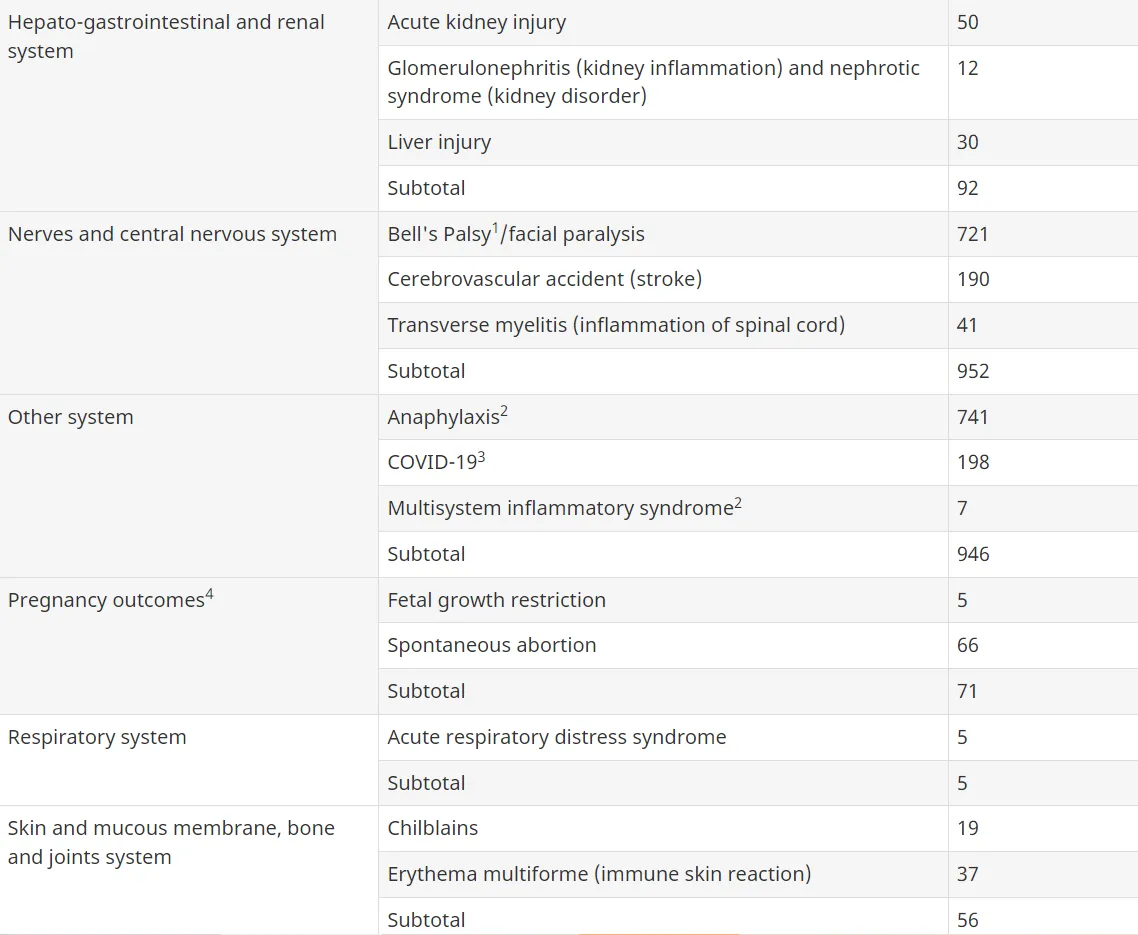Health Canada's highly minimized numbers are in this week for COVID-19 vaccine severe adverse events. This week's numbers show data up to and including January 7th, 2022. Click here last week's numbers. The following injuries are most likely from adults receiving their boosters and children age 5-11 receiving their first dose. The most common severe injuries are: myocarditis, Bell's Palsy, pulmonary embolism, thrombosis, stroke and Guillain Barre syndrome. This week, the authorities admitted to:
+3 deaths (261 total)
+25 myocarditis (1,599 total)
+21 Thrombosis with thrombocytopenia syndrome (110 total)
+7 Bell's Palsy (721)
+1 Guillain Barre Syndrome (113 total)
+6 stroke (190 total)
+1 miscarriage*
Total: 104 total new severe adverse events this week
Health Canada's vaccine injury data up to and including January 7th, 2022




*Although Health Canada records only miscarriages or fetal growth restriction for pregnancy complications, this week they recognize other Adverse Events of Special Interest (AESI) and cite WHO's new report on safety surveillance of covid-19 vaccines in pregnant and breastfeeding women. This safety surveillance as the only data for pregnancy and vaccination is circular logic to fraudulent proportions. If your obstetrician tells you there is plenty of data on the subject, remember you are the experiment, as the WHO admits that the safety profile of the vaccine in pregnant and breastfeeding women and their offspring is unknown as it is still being researched through vaccine surveillance programs.
"Adverse effects may only be apparent sometime after exposure: The adverse effects of a potentially teratogenic exposure during pregnancy may only be apparent at the time of delivery, e.g., via surface examination of the neonate, particularly in settings where access to ultrasound services is limited, or later after birth, e.g., in the case of some congenital anomalies or neurodevelopmental delay. Therefore, there can be a significant delay between the vaccine exposure and the identification and assessment of the outcome"

